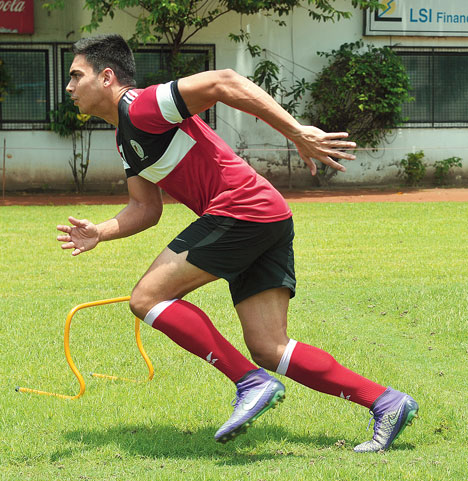
Football fever reached its crescendo over the last one month. While we marvelled at the creative skills of the best on the pitch, I wonder how many actually appreciated the demands the sport places on the physical system of the human body. Football, arguably, is possibly the most physically demanding of all sports. An international footballer has to be quick, agile, strong and flexible, with tremendous lung power. On an average, an international footballer logs about 8-10km during the course of a game (depending upon the position), most of it with great speed and agility. In short, he is a physical animal.
Many readers of this publication are recreational footballers. Corporate football is alive and kicking in the city. A lot of people play this game for fun but do not understand the physical risks involved with this activity. As a result, they get injured and some of these injuries are life-altering.
As part of my work, I meet many people with football injuries every day and a sizeable portion of this population are not professional players. Those who love and play this game not necessarily for a living also need to know what they must watch out for, so they can stay healthy and fit and, if possible, play this sport well into their golden years.

NEED FOR STRETCHING
I rate flexibility and stability as the most important physical attributes for any sport, and it is the same for football. All the other physical parameters follow in the hierarchy. About 80 per cent of all football injuries occur due to the lack of range of motion (flexibility) and stability in the hips, knees and ankle joints.
Footballers need both elasticity as well as plasticity. My observation has been that too many footballers warm up pre-match using static stretching techniques. Elasticity is the ability of the muscle to quickly stretch and return to its original length, and this is enhanced by dynamic stretching, typically performed before a game or practice session. Dynamic stretching takes the joint through its entire range of motion, simulating near game-like movements and prepares it for the stressors that the muscle and joint would experience during the game.
You must have seen footballers stretching after a game or immediately after being taken out in order to cool down and allowing the muscles to “breathe”. This kind of slow and controlled stretching is referred to as static stretching, which improves the plastic quality of the muscle.
Plasticity is the muscle’s ability to permanently change its length and remain in that state unless otherwise stimulated. Static stretching enhances plasticity and is performed at the end of a match or training session to restore the original length to the muscles. Unless muscles are stretched at the end of a hard session, they remain distorted and shortened over a long period and adversely affect joint alignment, leading to injury. In fact, all of us can benefit from better flexibility.

CARDIOVASCULAR ENDURANCE
A footballer should be able to go around a 90-metre football pitch (approx 280 metre) in under a minute. Each such run would involve three sharp bends at high speeds around the corners. A full training session could involve eight to 10 such runs, done with a 1:1 or 1:2 work-to-rest ratio (depends on whether it is off- or pre-season training).
Add to this, short and hard agility drills every other day. All this will greatly enhance a footballer’s cardiovascular endurance.
The beep test or yo-yo test is typically used today to judge a player’s cardiovascular fitness. Most international players would score 14 or above in these tests. Simply interpreted, it means they would be able to enhance their body’s ability to extract and deliver oxygen to the muscles by almost 14 times (approximately) their resting capacity. In training science, it is referred to as VO2 Max.

BUILD STRENGTH
You can never be too strong for a sport. Footballers need to be built like an ox, especially in the legs, hips and calf areas. The best exercises for strength are squats, dead lifts, barbell presses, rows, cleans and snatches.
According to the National Strength and Conditioning Association of America, an adult male footballer should be able to squat 1.5 times his own body weight. The squat is an extremely beneficial exercise for the footballer and, if performed correctly, along with the dead lift will eliminate almost 75 per cent of all football injuries.
Upper body strength is best served by doing pull-ups, inverted rows, overhead presses and some horizontal pressing movements.
It is always recommended to start light, learn the correct technique and increase as you get stronger and master the technique. Free weights and implements are always better than machine training as the latter does not build stability and core strength.

Pictures: Pabitra Das
Location: CC&FC
Exercises demonstrated by Jeh Williamson (a strength and conditioning coach at Endorphins and vice-captain of the CC&FC football team)
Ranadeep Moitra is a strength and conditioning specialist and corrective exercise coach










